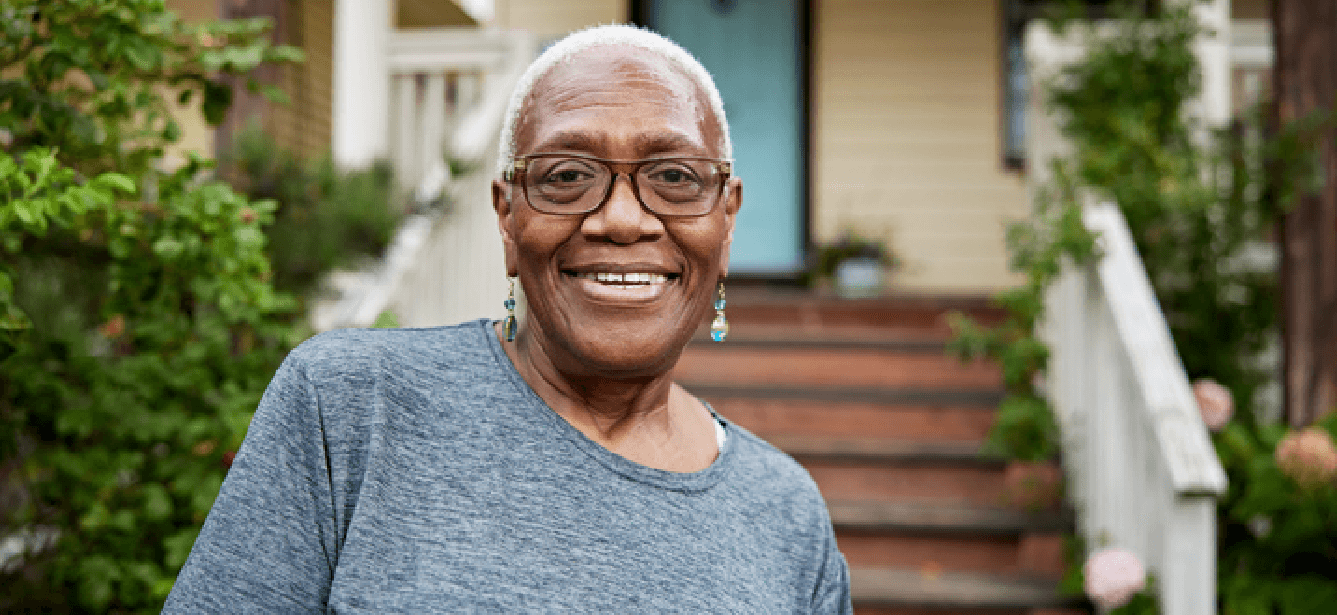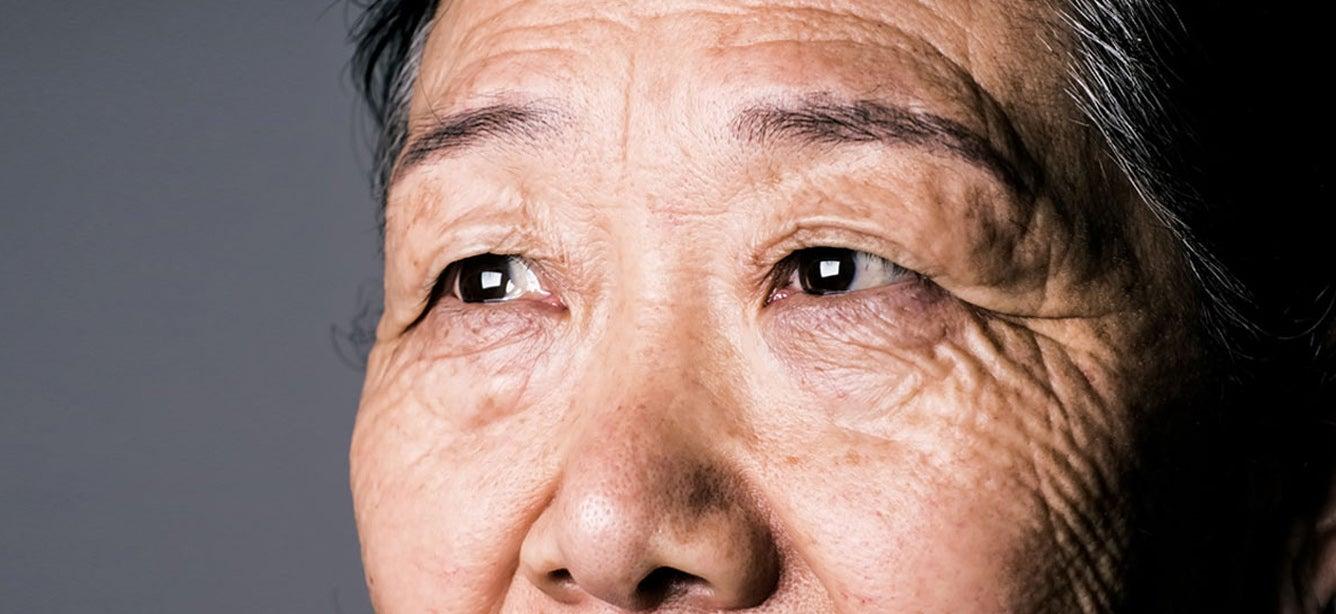
Nearly 58 million Americans are 65 and older, with projections estimating that the population of older adults will grow to 88.8 million in 2060.1 On average, a 65-year-old can expect to live another 18.9 years.2
For most of us, good health ensures independence, security, and productivity as we age. Yet millions of older adults are living with such challenges as chronic diseases, falls, physical inactivity, oral health concerns, and behavioral health issues—all of which can severely impact quality of life.
Chronic diseases
- Older adults are disproportionately affected by chronic conditions, such as diabetes, arthritis, and heart disease. About 93% have at least one chronic condition, and nearly 80% of have two or more.3
- The leading causes of death among older adults in the U.S. are heart disease, cancer, COVID-19, stroke, chronic lower respiratory diseases, Alzheimer’s disease, and diabetes.4
- Chronic diseases can limit a person’s ability to perform daily activities, cause them to lose their independence, and result in the need for institutional care, in-home caregivers, or other long-term services and supports.5
- It is estimated that 27% of the U.S. adult population has multiple chronic conditions, which cost the American health care system over $1 trillion each year.6 Yet less than 3% of U.S. health care dollars is spent on prevention to improve overall health.7
Falls
- One out of four older adults falls each year.8
- 3 million adults 65+ are treated in emergency departments for unintentional fall injuries each year.9
- As a result of falls, every 11 seconds, an older adult is treated in the emergency room; every 19 minutes, an older adult dies.10
- Falls are the leading cause of fatal and nonfatal injuries among older adults, causing hip fractures, head trauma, and death.10
- Older adults are hospitalized for fall-related injuries five times more often than for injuries from other causes.10
- The death rate from older adult falls is increasing; the age-adjusted death rate rose from 55.3 per 100,000 older adults in 2012 to 78.0 per 100,000 older adults in 2021.8
- The nation spends $50 billion a year treating older adults for the effects of falls, 75% of which is paid for by Medicare and Medicaid.11 If falls rates are not reduced, direct treatment costs are projected to reach $101 billion by 2030.12
- Fear of falling can lead older adults to limit their activities, which can result in more falls, further physical decline, depression, and social isolation.13, 14
Physical activity
- Regular exercise can help older adults stay independent and prevent many health problems that come with age. According to the 2018 Physical Activity Guidelines for Americans, older adults should do two types of physical activities each week to improve their health—aerobic and muscle-strengthening.15
- These guidelines recommend that older adults engage in at least 150 minutes of moderate-intensity or 75 minutes of vigorous aerobic activity a week and muscle strengthening activities on two or more days a week.15
- In 2019 only 23.1% of adults age 65+ met the physical activity guidelines outlined above.16
Oral health
- Oral health is important for overall health and well-being, but in 2022, 36.3% of older adults had not seen a dentist in the last year.17
- Older adults with diabetes, heart disease, and in poor health were less likely to have had a dental visit in the past year.17
- About 13.2% of older adults have complete tooth loss.18
- One in five adults age 65+ has untreated dental caries (cavities).18
- Poor oral health can negatively impact nutrition and proper management of chronic conditions.
Behavioral health
- One in four older adults experiences a behavioral health problem such as depression, anxiety, or substance abuse.19
- These problems can complicate the treatment of other medical conditions, reduce quality of life, increase use of health care services, and lead to premature death.19
- People age 85+ have the highest rates of suicide compared to any other age group. Men die by suicide four times more often than women.20
- Deaths caused by excessive alcohol use are on the rise; in 2020, over 11,000 adults age 65+ died from alcohol-induced causes.21
- Depression and other behavioral health problems are not a normal part of aging and can be treated. Despite the availability of effective interventions, 66% of older adults are not receiving the care they need.22
Infectious disease prevention
- As of August 2024, 76.3% of all deaths from COVID-19 were among those age 65+, and 70-85% of seasonal flu-related deaths occur in adults age 65+, according to the U.S. Centers for Disease Control and Prevention.23,24
- While lifesaving vaccines are available, research shows COVID vaccine uptake has slowed among older adults.
- New research shows that older adults may be at a higher risk of Long COVID, a post-COVID condition in which virus symptoms persist, return or develop. According to the National Institutes of Health (NIH), possible risk factors include older age and preexisting health conditions.25
NCOA’s role
The National Council on Aging's (NCOA) Center for Healthy Aging supports the expansion and sustainability of evidence-based health promotion programs in the community through collaboration with national, state, and community partners to help older adults live healthier lives. The Center houses three National Resource Centers funded by the U.S. Administration for Community Living’s Administration on Aging.
Chronic Disease Management
NCOA’s National Chronic Disease Self-Management Education Resource Center provides leadership, technical assistance, and resources to support state and community-based partners in expanding and sustaining evidence-based programs, including the suite of Chronic Disease Self-Management Education Programs, originally developed by Stanford University. These programs, which are available in the community and online, help older adults better manage their chronic conditions and improve their quality of life.
Falls Prevention
NCOA’s National Falls Prevention Resource Center serves as a national clearinghouse for information on falls prevention and supports the implementation and sustainability of evidence-based Falls Prevention Programs. The Falls Free® Initiative, a national effort, includes State Coalitions and the 2015 Falls Free® National Action Plan to reduce falls and fall-related injuries among older adults.
Modernizing Senior Centers Resource Center
The Modernizing Senior Centers Resource Center helps senior centers address their challenges and amplify their successes as they strive to meet the ever-changing needs of older adults. The overarching goal of the new Resource Center is to ensure that senior centers have the capacity, tools, and resources necessary to develop and implement programs and services that meet the current and future needs of diverse older adults.
Other Initiatives
- NCOA promotes physical activity, behavioral health, and other evidence-based programs.
- In partnership with the National Consumers League, NCOA has created a National Obesity Bill of Rights to define quality obesity care as the right of all adults and to drive systems change.
- NCOA implements the Aging Mastery Program®, an in-person and online education and behavior change incentive program to help older adults age well.
- COVID-19 and Influenza Vaccine Uptake Initiative: NCOA received a $50 million grant from the U.S. Administration for Community Living to implement a nationwide campaign to ensure older adults and people with disabilities get the latest COVID and flu vaccines.
Sources
1. ACL. 2023 Profile of Older Americans. May 2024. Found on the internet at https://acl.gov/sites/default/files/Profile%20of%20OA/ACL_ProfileOlderAmericans2023_508.pdf
2. CDC, National Center for Health Statistics. Mortality in the United States, 2022. March 2024. Found on the internet at https://www.cdc.gov/nchs/products/databriefs/db492.htm
3. Kathleen B. Watson, et al. Trends in Multiple Chronic Conditions Among US Adults, By Life Stage, Behavioral Risk Factor Surveillance System, 2013-2023. Preventing Chronic Disease. April 17, 2025. Found on the internet at: https://www.cdc.gov/pcd/issues/2025/24_0539.htm
4. USA Facts. What are the leading causes of death in the U.S.? Oct. 6, 2023. Found on the internet at https://usafacts.org/articles/americans-causes-of-death-by-age-cdc-data/
5. CDC. The State of Aging and Health in America 2013. Atlanta, GA: Centers for Disease Control and Prevention, US Dept of Health and Human Services; 2013.
6. Hacker, K. The burden of chronic disease. Mayo Clin Proc Innov Qual Outcomes. 2024 Feb; 8(1): 112–119. Found on the internet at https://www.ncbi.nlm.nih.gov/pmc/articles/PMC10830426/
7. Kamal, R. and Hudman, J. What do we know about spending related to public health in the U.S. and comparable countries? Peterson-KFF Health System Tracker. Sept. 20, 2020. Found on the internet at https://www.healthsystemtracker.org/chart-collection/what-do-we-know-about-spending-related-to-public-health-in-the-u-s-and-comparable-countries/
8. CDC. Older Adult Falls Data. Found on the internet at https://www.cdc.gov/falls/data-research/index.html
9. CDC. National Center for Health Statistics. Unintentional Fall Deaths Among Adults Aged 65 and Over: United States, 2020. November 2022. Found on the internet at https://www.cdc.gov/nchs/products/databriefs/db449.htm
10. CDC, National Center for Injury Prevention and Control. Web-based Injury Statistics Query and Reporting System (WISQARS). Found on the internet at https://wisqars.cdc.gov
11. Florence CS, Bergen G, Atherly A, Burns E, Stevens J, Drake C. Medical costs of fatal and nonfatal falls in older adults. Journal of the American Geriatrics Society 2018; 66(4):693-698. Found on the internet at https://pubmed.ncbi.nlm.nih.gov/29512120/
12. Houry D, Florence C, Baldwin G, Stevens J, McClure R. The CDC Injury Center's response to the growing public health problem of falls among older adults. American Journal of Lifestyle Medicine 2016;10:74-77. Found on the internet at https://pubmed.ncbi.nlm.nih.gov/26688674/
13. Gillespie, LD, Robertson, MC, Gillespie, WH, Sherrington C, Gates S, Clemson LM, Lamb SE. Interventions for preventing falls in older people living in the community. Cochrane Database of Systematic Reviews 2012, Issue 9.
14. Vellas BJ, Wayne SJ, Romero LJ, Baumgartner RN, Garry PJ. Fear of falling and restriction of mobility in elderly fallers. Age and Ageing. May 1997. Found on the internet at https://pubmed.ncbi.nlm.nih.gov/9223714/
15. U.S. Department of Health and Human Services (HHS), Office of Disease Prevention and Health Promotion. Physical Activity Guidelines for Americans, 2nd Edition. 2018. Found on the internet at https://health.gov/sites/default/files/2019-09/Physical_Activity_Guidelines_2nd_edition.pdf
16. America’s Health Rankings. 2021 Senior Report. Found on the internet at https://www.americashealthrankings.org/learn/reports/2021-senior-report/key-findings-behaviors
17. National Center for Health Statistics. Dental Care Among Adults Age 65 and Older: United States, 2022. Found on the internet at https://www.cdc.gov/nchs/products/databriefs/db500.htm
18. National Center for Health Statistics. Oral and Dental Health. Found on the internet at https://www.cdc.gov/nchs/fastats/dental.htm
19. Wyatt Koma, et al. One in Four Older Adults Report Anxiety or Depression Amid the COVID-19 Pandemic. Kaiser Family Foundation. Oct. 9, 2020. Found on the internet at https://www.kff.org/medicare/issue-brief/one-in-four-older-adults-report-anxiety-or-depression-amid-the-covid-19-pandemic/
20. CDC. Suicide data and staistics. Found on the internet at https://www.cdc.gov/suicide/facts/data.html
21. CDC. Alcohol-induced Deaths in Adults Aged 65 and Over: United States, 2019 and 2020. Found on the internet at https://www.cdc.gov/nchs/data/hestat/alcohol/alcohol-deaths-2020.htm
22. Garrido, M. M., R. L. Kane, M. Kaas, and R. A. Kane. 2011. Use of mental health care by community-dwelling older adults. Journal of the American Geriatrics Society 59(1):50-56
23. CDC. Demographic Trends of COVID-19 Deaths in the US Reported to NVSS. Found on the internet at https://covid.cdc.gov/covid-data-tracker/#demographics
24. CDC. Past Seasons Estimated Influenza Disease Burden. (2022) Found on the internet at https://www.cdc.gov/flu/about/burden/past-seasons.html.
25. National Institutes of Health. Long COVID. Oct. 5, 2022. Found on the internet at https://covid19.nih.gov/covid-19-topics/long-covid



